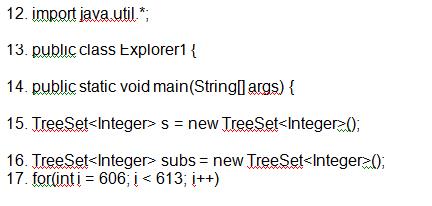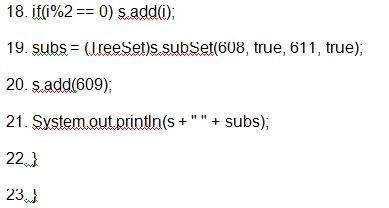出自:Oracle认证
Given: 
 What is the result?()
What is the result?()
A:Compilation fails.
B:An exception is thrown at runtime.
C:[608, 609, 610, 612] [608, 610]
D:[608, 609, 610, 612] [608, 609, 610]
E:[606, 608, 609, 610, 612] [608, 610]
F:[606, 608, 609, 610, 612] [608, 609, 610]